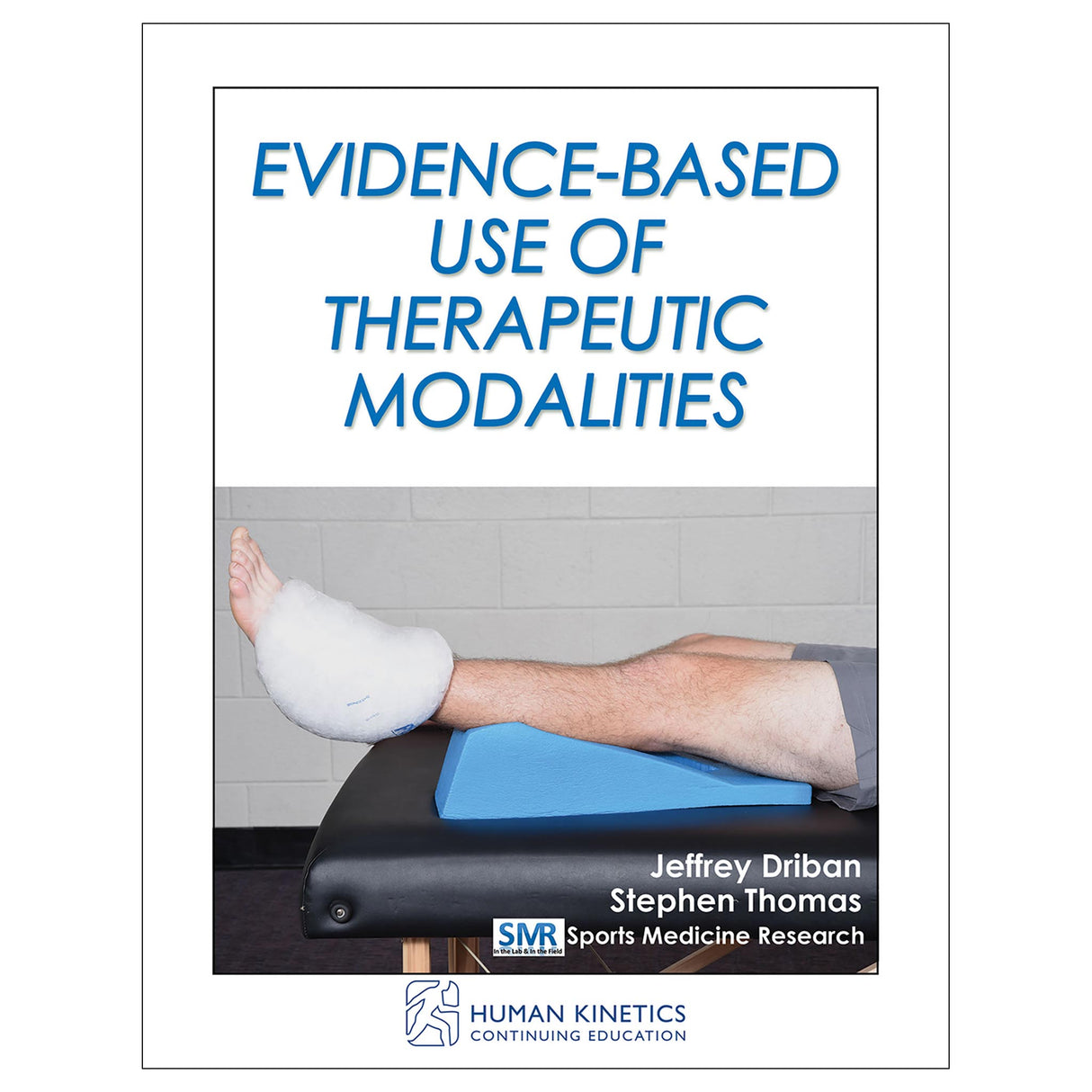Evidence-Based Use of Therapeutic Modalities Online CE Course
Author: Jeffrey Driban, Stephen Thomas
$75.00 USD
Human Kinetics strongly recommends that you complete your exam within the calendar year of your date of purchase to ensure approved credits do not expire for your organization.
- 20 online articles from Sports Medicine Research
- Online continuing education exam
Evidence-Based Use of Therapeutic Modalities Online CE Course provides a comprehensive review of the use of common therapeutic modalities such as ultrasound, laser therapy, cryotherapy, and thermal agents. A series of 20 articles summarize the research, offer a clinical appraisal, and indicate the clinical relevance of the study. Using existing studies and current research, you’ll understand how to correctly apply therapeutic modalities in actual practice.
This course supports the initiative in the athletic training profession to integrate the best new research and evidence into clinical decision making with the goal of improving patient outcomes.
Once you complete the readings and pass the 100-question exam, you can print a certificate for continuing education credits.
Learning Objectives
- Identify the optimal applications and clinical situations for the use of cryotherapy.
- Describe the benefits and challenges of using alternative approaches to ultrasound therapy.
- Implement alternative electrotherapy treatments outside the standard applications.
- Identify patient populations that may be responsive to laser therapy and implement these modalities appropriately.
Audience
Certified athletic trainers and athletic therapists.Article 2: Are Current Cryotherapy Protocols Sufficient to Reduce Microvascular Blood Flow?
Article 3: Cold-Water Immersion for Preventing and Treating Muscle Soreness After Exercise
Article 4: Colder May Not Be Cool for Recovery
Article 5: Cool It Down Before You Work It Out
Article 6: Reevaluating RICE for Ankle Sprains
Article 7: Should Athletes Return to Sport After Applying Ice?
Article 8: Whole-Body Cryotherapy on Proprioception and Muscle Damage
Article 9: Nonthermal Ultrasound Could Help Keep Your Reflexes From Inhibiting Your Rehab
Article 10: Hands Off the Hands-Free Ultrasound If You Are Looking for Deep Heating Effects
Article 11: Quadriceps Inactivation? Shake It Off
Article 12: Attractive Treatment Option for Patients Suffering From mTBI-Related Headaches
Article 13: TENS to Treat Knee-Pain-Induced Quadriceps Inhibition?
Article 14: A More Effective Way to Enhance Cross-Education
Article 15: “Shock”ingly No Improvements in Ankle Sprain Outcomes
Article 16: Think Before You Soak
Article 17: More Oxygen Please
Article 18: Can Laser Therapy Be Used to Treat Meniscal Injuries?
Article 19: Low-Level Laser Therapy for Achilles Tendinitis
Article 20: Iontophoresis for Drug Delivery: Does It Really Work?





